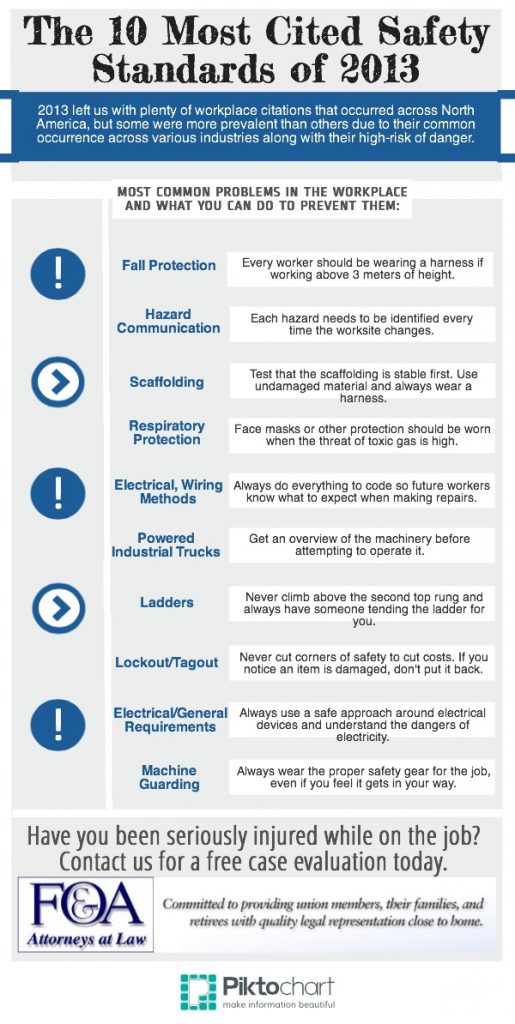2013 left us with plenty of workplace citations that occurred across North America, but some were more prevalent than others due to their common occurrence across various industries along with their high-risk of danger.
OSHA has cited the following 10 as the most common problems in the workplace of 2013:
1. Fall Protection: Fall protection is one of the most ignored safety standards. Every worker should be wearing a harness if working above 3 meters of height.
2. Hazard Communication: Some workers who get into accidents just take new environmental changes without acknowledging the hazardous effects they can have on daily operations if something is done. Each hazard needs to be identified every time the worksite changes.
3. Scaffolding: It’s not only hazardous to work on scaffolding but it is also dangerous to set up. Testing the product is key. Use undamaged material and always wear a harness.
4. Respiratory Protection: Many workers and employers are unaware of these problems on the jobsite. Just because you cant smell or see toxic gas doesn’t mean that it isn’t around. Respiratory protection, such as face masks should always be used when the threat potential is high.
5. Electrical, Wiring Methods: Never cut corners when wiring. Always do everything to code so future workers know what to expect when making repairs. If wired incorrectly, you could not only be putting your life in danger but the lives of future workers as well.
6. Powered Industrial Trucks: It is important to get an overview of the machinery before operating it.
7. Ladders: Never climb above the second top rung, and always have someone tending the ladder when you are working at a height.
8. Lockout/Tagout: Never cut corners of safety to cut costs. The cost to repair damaged items is much cheaper than paying for medical bills or losing your life. When you use an item and notice it is damaged, tag it and lock it out, don’t just put it back in storage.
9. Electrical, General Requirements: Always use a safe approach around electrical devices at all times. Understand everything from how electricity travel to how to react if shocked and always follow guidelines.
10. Machine Guarding: Machine guarding is another common type of injury that can be prevented, but many workers choose to avoid using this safety feature because they feel it can get in the way of their work. For example, a worker using the metal grinder may see better without the guard, but if the object slips, it can fling hot metal into the worker’s eye or face. This is a common incident that happens in almost every machine shop across the country.
Learn more about the top 10 most cited safety standards.

